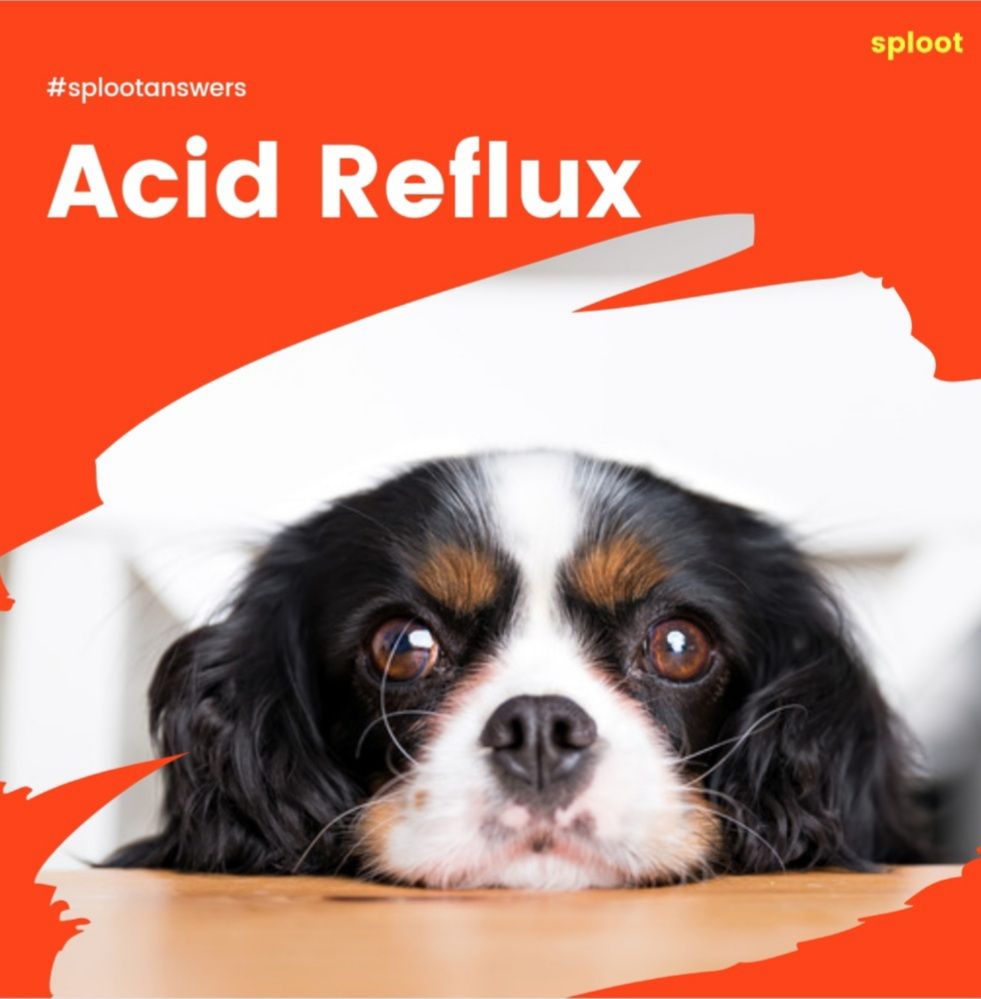Acid Reflux in Dogs

What is acid reflux?
Acid reflux in your dog results in a very uncomfortable and dangerous situation due to the stomach contents repeatedly entering the esophagus and comeback to the stomach again. This erodes the tissues in the esophagus and increases the risk of developing esophageal ulcers in your dog. This condition is hard to diagnose by observation, but your dog will show the sign of bad breath, burping, whipping, or burbling after eating and sometimes vomiting after eating.
The acid reflux condition itself isn’t so serious, but its irritation can result in the formation of necrosis, narrowing, and ulceration of the esophageal lining due to the irritation of the acid in the esophageal tissues. Sometimes, passive regurgitation can cause vomit content to enter the lungs and results in life-threatening damage. Simply, acid reflux means the entry of the acid and digestive enzymes from your stomach to the esophagus.
Symptoms of Acid Reflux in Dogs
Acid reflux in your dog is difficult to diagnose, however, your dog may produce some of the following symptoms:
- Burping, gurgling, or gagging after eating
- Bad breath
- Coughing or weak vomiting
- Weight loss
- Loss of appetite
- Wheezing
- Excessive salivation
- Inactivity after every meal
- Whining or howling after eating
If you notice any of the above symptoms, please go to your vet immediately.
Causes of Acid Reflux in Dogs
Acid reflux is a very common condition affecting the dog of any age, but younger dogs are more susceptible to develop this condition because their esophageal sphincters are still developing. This reflux also caused by a damaged or abnormal weakened lower esophageal sphincter. Other potential causes of acid reflux include:
- Improper emptying of the stomach
- Excessive production of stomach acid
- Obesity
- Congenital condition like hiatal hernia
- Eating inappropriate food such as spicy food
- Higher level of calcium in the blood
- Medications like prednisolone can increase the susceptibility to acid reflux.
How to know if your dog develops acid reflux
If you notice abnormal symptoms in your dogs during or after eating, see the veterinarian immediately. While left untreated, acid reflux can develop many additional complications. Your veterinarian will listen to your dog’s chest sound after eating to identify whether there is acid reflux. He can perform an endoscopy for further confirmation. Endoscopy will visualize any sign of ulcer, inflammation, or tumor inside your dog’s esophagus.
Treatment of Acid Reflux in Dogs
The treatment of acid reflux is so simple. Just withhold your dog’s food for one or two days. Then start feeding with small meals of easily digestible foods containing low-fat and low-protein throughout the day. The easily digestible homemade foods include boiled chicken, rice, broccoli, etc. Since fats and proteins are responsible for higher acid production, so these must be controlled. If the problems persist, surgical intervention may be necessary to correct the problems of hernia or ulcer. Generally, the acid reflux condition can be easily manageable. Sometimes, veterinarians prescribe ranitidine to reduce the acid in your dog’s stomach. This also helps to move your stomach contents in the correct direction. Always consult with your veterinarian for any kind of problem.